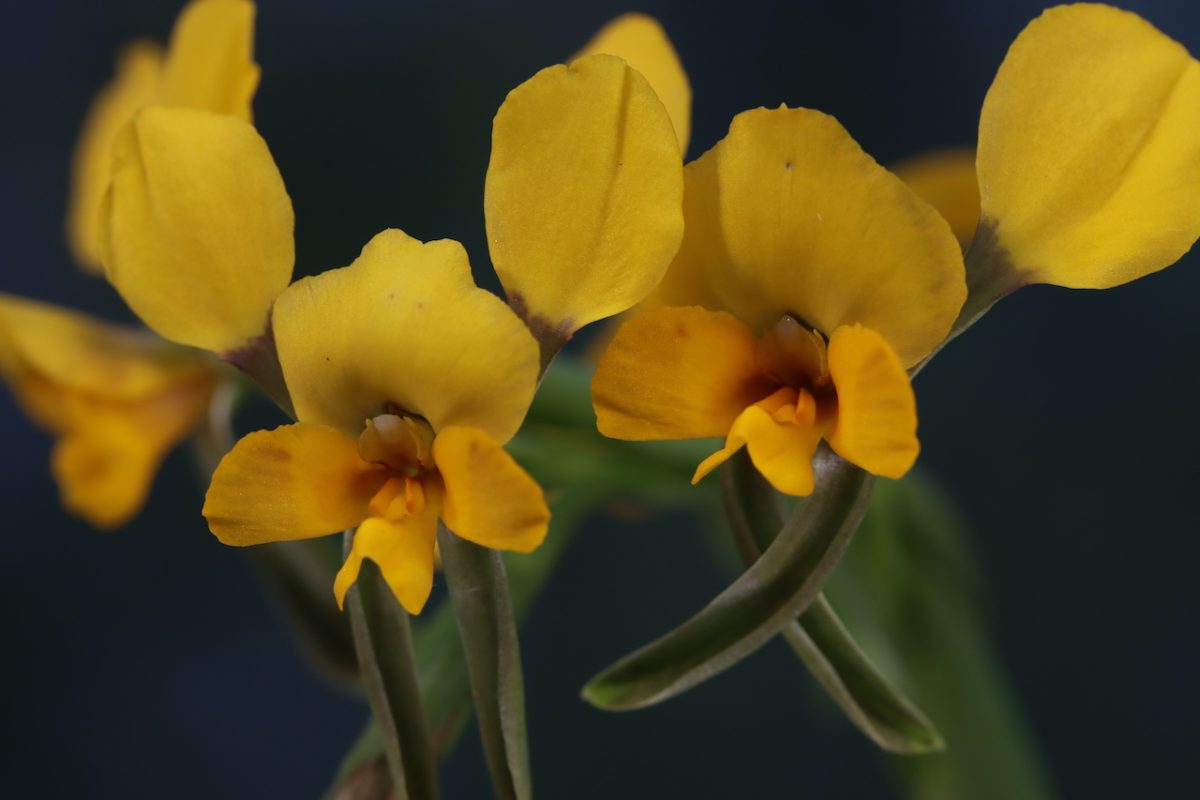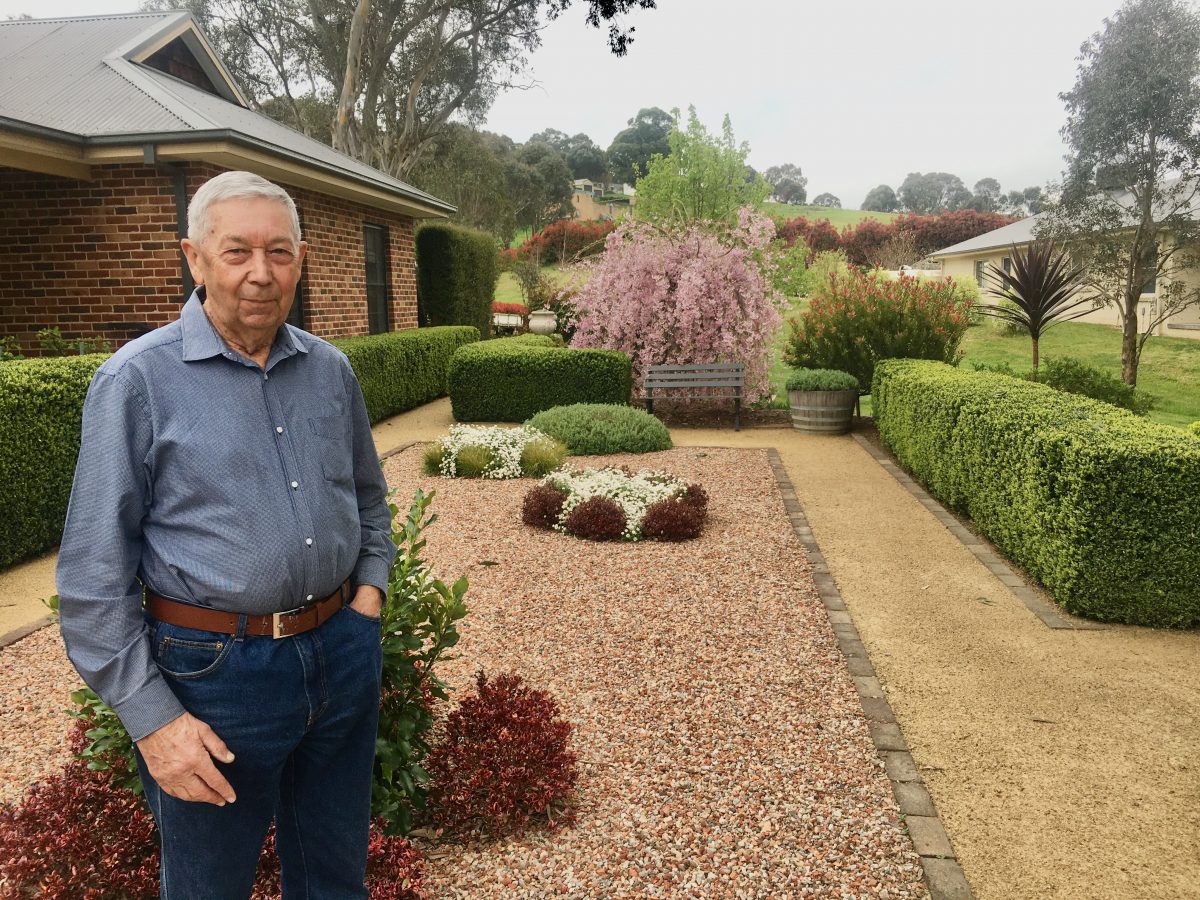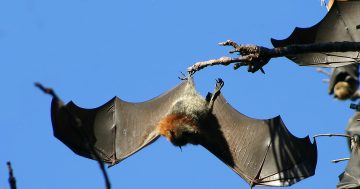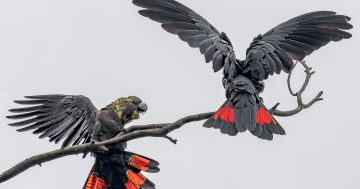
Found close to Goulburn, the buttercup doubletail is endangered and along with all other native orchids is important for local biodiversity. It will feature in a photographic exhibition and talk on Southern Tablelands orchids on 12 October. Photo: John Weatherstone.
Some of Australia’s rarest, most striking native orchids grow not in remote forests along the coast, but within a few kilometres of Goulburn. Most people unaware of their habitat and exquisite beauty would pass them by without a second glance.
But when photographed close up, they reveal nature’s true splendour. Many of them have been rediscovered in recent years in ungrazed bushland by conservationist and native horticulturist John Weatherstone.
John will present a talk and photographic exhibition next Thursday (12 October) at the Hume Conservatorium at 7 pm on the native orchids of the Southern Tablelands. His eyes were opened to the enchanting orchids many years ago by his father and nature lover, Gladstone Weatherstone.
A farmer at Oolong near Gunning where John grew up, Gladstone placed a blindfold on his then five-year-old son and carried him to flowering orchids before taking off the blindfold.
“He had two main passions in nature, one was birds and one was native orchids,” John said. Gladstone’s collection of native bird eggs, which began when he was 13, is now in the National Museum of Australia.
Similarly in awe of Australia’s natural beauty, John’s broad knowledge of native orchids led him in 2020 to visit a private reserve close to Goulburn where he discovered a large population of flowering buttercup doubletail orchids (Diuris aequalis).
“In the first year we found them here, we found 150 plants which made it one of the largest known populations of this species,” John said.
Originally a travelling stock reserve, the land has not been grazed for 15 years (apart from being grazed by kangaroos) and John identified 19 species of native orchids on it.
On another site east of Goulburn on Gorman Road, native orchids can be spectacular in bloom. John found a group of flying duck orchids (Caleana major) there, photographed them and learned from specialists in the field that they were an exceptional collection.

Orchids like the flying duck are among the most beautiful and mysterious of all Australian native flowering plants. Photo: John Weatherstone.
John has spent many years studying and photographing the plants, and he is now a Land for Wildlife (LfW) assessor and considered to be one of the leading enthusiasts on terrestrial orchids in the Southern Tablelands. Through the LfW program, John visits local properties to advise landholders on protecting and enhancing remnant habitats, or rare and endangered orchids.
John’s Southern Tablelands photo exhibition is jointly run by several conservation groups linked to Kanangra-Boyd National Park and the corridor through to Wyangala Dam. Their aim is to restore the health and resilience of habitat for forest-dependant native wildlife post-bushfires.
He said orchids were an intriguing group of plants and the largest plant family on Earth, with extraordinary traits.
“A number of orchids, including the flying duck orchid, snap shut and temporarily trap the insect so it collects pollen to take to the next flower,” John said. “If a documentary was made on the sex life of orchids it couldn’t be shown in general viewing time.”
As a photographer he uses a relatively new technique called focus stacking that gives a depth of field in close-up images, which wasn’t previously possible. This involves taking multiple images and combining the in-focus part of each photo into a single image.
His collection of stunning images includes the threatened species buttercup doubletail, Tallong midge (Genoplesium plumosum), crimson spider (Caladenia concolor) and superb midge (Genoplesium superbum).
The endangered buttercup doubletail has been found in very small populations in the forests and woodlands of the Kanangra-Boyd National Park. Only a few small, scattered populations remain in the wild.

Passionate horticulturalist and Landcare pioneer John Weatherstone in his Goulburn garden. Photo: John Thistleton.
Several populations have been found by private landholders near the Great Dividing Range on the Southern and Central Tablelands. Landholders are encouraged to report threatened species by providing a photograph and the location of the plants. This is to help biodiversity and conservation officers understand how many are left, distribution and what kind of vegetation they prefer.
John’s talk and photo exhibition will give attendees a chance to learn more about the terrestrial orchids of the Southern Tablelands, allow landholders to find out about joining the LfW program, and view his stunning collection of photographs.
Both the exhibition will open at 7 pm on Thursday (12 October) at the Hume Conservatorium. This event is free to attend, but bookings are essential. Book your ticket via the Humantix website.











